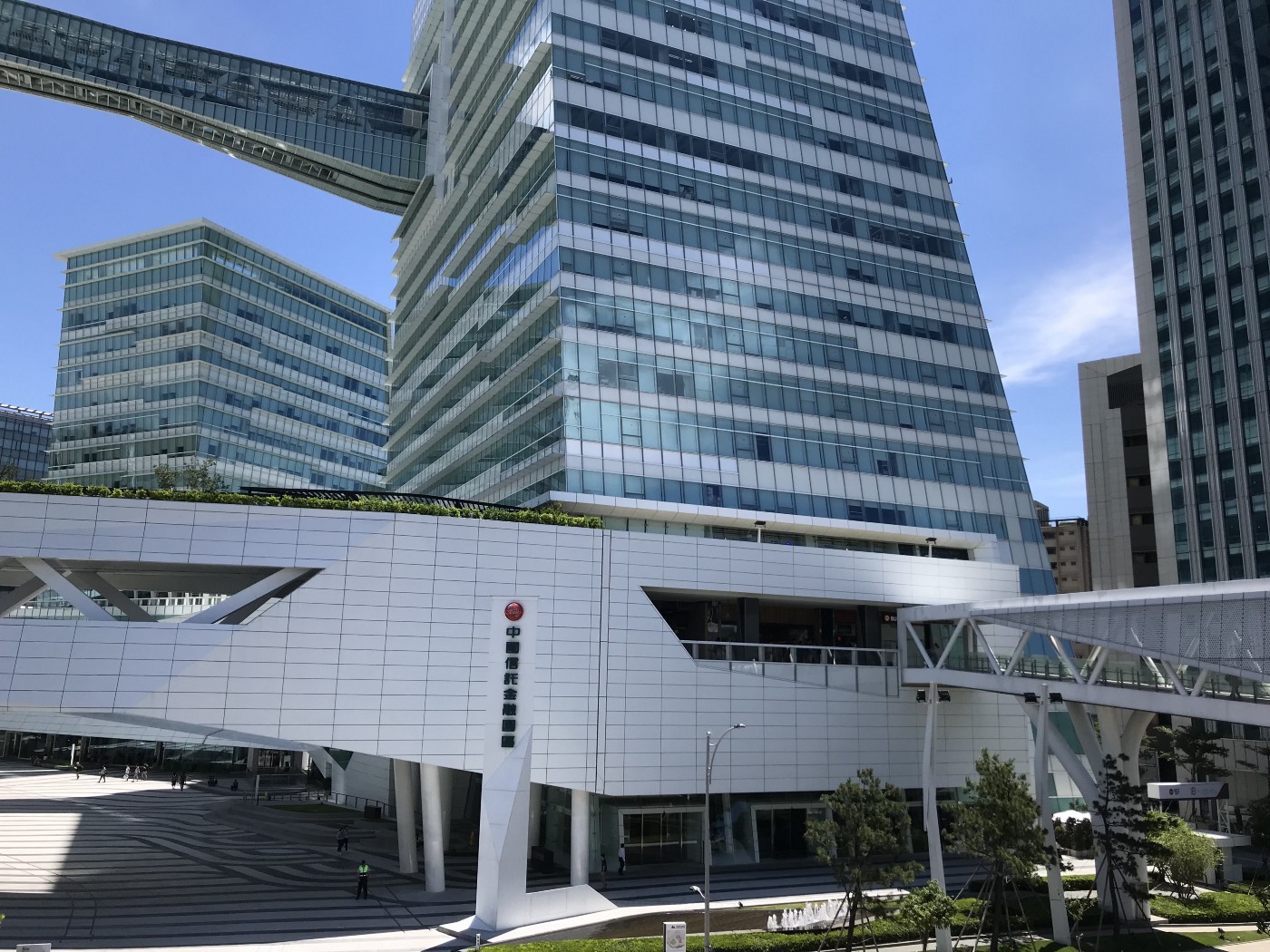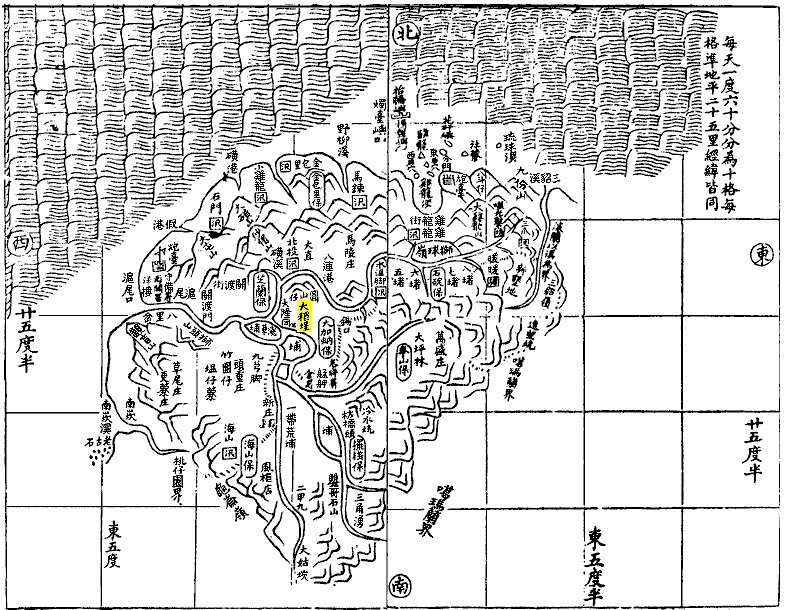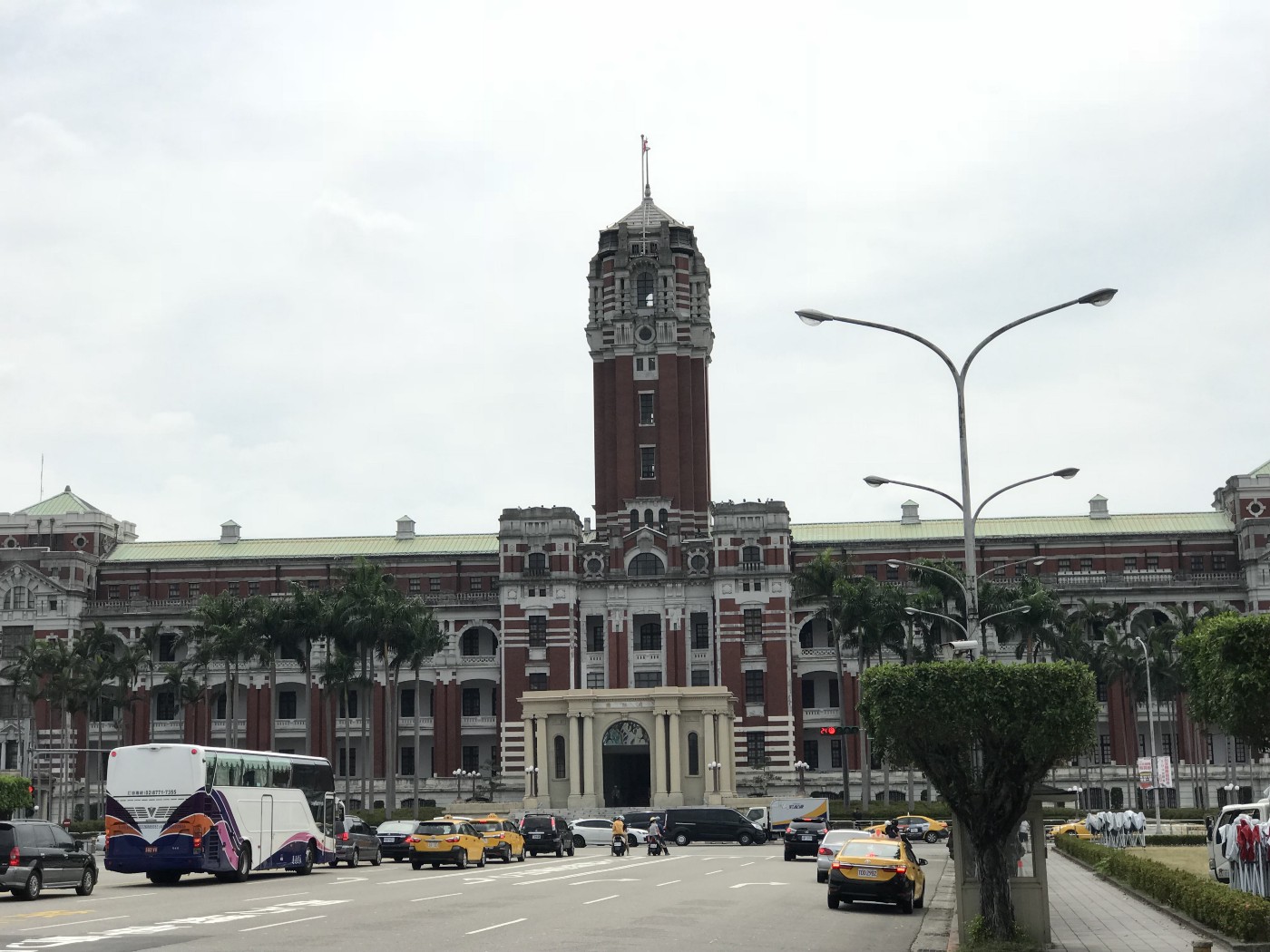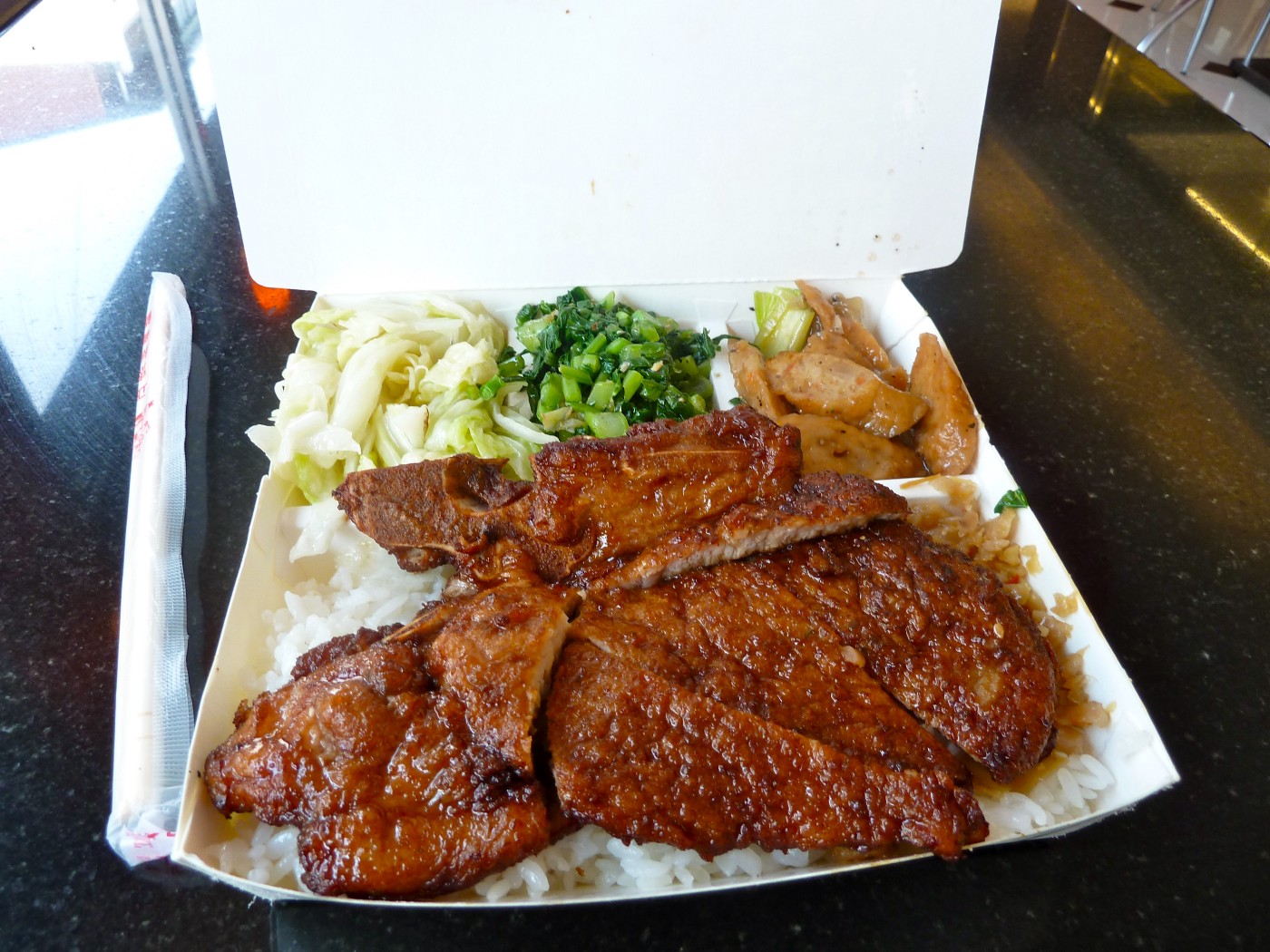The Story of Taipei
A history translated by an outsider

There is no other city in the world like Taipei.
The statement may sound like some banal utterance headlining a paid tourism advert or the first sentence in the fiftieth edition of some travel guide; however, I mean it when I say that of the many places I have visited around the world, there is no other place with a similar feeling.

The city is a living concoction of seemingly contradictory qualities. All around Taipei, you can find international luxury brands, local mom and pop’s restaurants that have been in business for decades, chic coffee shops tucked away in 2-meter wide alleyways, Japanese izakaya bars, pocket parks, timeless-looking temples in the shadow of glass high rises, and neon-lit night markets accompanied with wafts of fragrant street snacks. Row upon row of orderly, square city blocks are cut into fragments by a jigsaw of alleyways where even Google Maps cannot help you. And even these quiet neighborhood alleyways, reminiscent of the 1950s, are then juxtaposed by a hypermodern metro system — arguably one of the best in the world — that moves millions of people a day from one side of the city to another. Thus, Taipei is paradoxically a comforting, chaotic, convenient, confounding, and orderly place.

But having now lived in the city twice for unfortunately brief durations, I have been itching to understand just how Taipei came to be Taipei. Luckily enough, I worked for the city government over the summer of 2018, so that gave me just the opportunity I was looking for to dig into the city’s story.
Tracing Threads: Back to the Beginning

Anyone who has visited before knows that Taipei is nestled in a wet and humid basin surrounded by rainforest-covered mountains. The basin, which now contains the urban conglomeration of both Taipei and New Taipei City, was once submerged beneath a vast, shallow lake. Imperial documents from the Ming Dynasty report that the lake was formed from an earthquake, which disrupted the flow of the region’s rivers. According to a contemporary folk historian, the lake was so vast that if a person were to stand on the shoreline, the far shore would not be visible.
The Ketagalan tribe, an Austronesian people that migrated to Taiwan before recorded history, had settled near the lakeshore and remained active in the area until Han settlers began to crowd them out. Settlers from the Fujian Province in China established trading posts and fishing villages across the island starting in the seventeenth century, although most of the Chinese settlements were initially concentrated in the flat plains of the south, including the island’s administrative capital of Tainan (臺南). A few settlements dotted the modern capital region, including the ports of Tamsui (淡水) and Keelung (基隆, then colloquially referred to as 雞籠 in Southern Min).
During the turbulent seventeenth century, first the Spanish and then the Dutch attempted to wrest control of the island from the Han settlers (who were occupiers themselves). The European colonial powers constructed forts within a stone’s throw of the island’s coastal settlements, including in Tamsui and Keelung; however, their activity being so close to China’s doorstep drew the ire of both the waning Ming Dynasty loyalists and the newly-ascendant Qing Dynasty. Military intervention from the general Koxinga (國姓爺) combined with persistent raids from the indigenous peoples of Taiwan thwarted European colonial ambitions; however, the independent island was subsequently settled by Koxinga’s forces and later centralized and incorporated into Chinese imperial administration.
By the nineteenth century, the aforementioned shallow lake had long ago drained. In its stead flowed the wide and meandering Tamsui River. The river originated in the mountains to the south and wound its way to the Pacific in the north. On its banks grew two towns that would eventually be known as the oldest neighborhoods of Taipei City: Banka (萬華) and Twatutia (大稻埕).
These sleepy farming villages (大稻埕, literally translates as “big rice paddy jar”) were tiny and of little note, remaining backwater settlements of a wild frontier for years and years. After the conclusion of the Opium Wars, however, the villages’ statuses forever changed: Taiwan was fortuitously opened to foreign trade. A thriving tea export business picked up steam in Twatutia, with dozens of tea shops opening along the riverfront. After significant growth, both in terms of population and wealth, the two towns were merged into a single polity in 1875. This administrative decision came on the heels of the Qing establishing a new town due east of Banka called Chengnei (城內, or “inside walls”). The new city center’s name was derived from the construction of city walls to protect the area from the increasing threat of foreign attacks. They proved to be the last city walls constructed in Imperial China. While the walls no longer exist today, the old city gates are still visible in Taipei to this day.


Reorganization and the Birth of Taipei
In 1887, the Qing Empire reorganized the political boundaries of Taiwan by separating the island from the mainland Fujian Province. At the same time, the administrative center of Taiwan was shifted from the sunny, cultural hub of Tainan in the south to the wet, muddy walled town of Chengnei in the north. The walled town was rechristened as Taipei (臺北, “Tai(wan) North”).
The decision perplexed many not just in retrospect, but contemporaneously. Tainan was by far the largest settlement on the island, with an imposing Dutch-constructed fort acting as existing coastal defense. Taipei had experienced a flurry of construction in the past decade, such as the first incarnation of the Taipei Confucius Temple, a yamen (a residence for imperial bureaucrats) and the beginnings of a train line to Keelung, but was in the peripheral hinterlands when compared to Tainan. Contrary to first appearance, the government’s decision was quite rational. Qing supremacy in the region was weakening and raids from pirates and European powers were taking their toll on Taiwan. Situated in the flat coastlands, Tainan was subject to frequent attack. Taipei, however, surrounded on all sides by mountains save for coastal access to the northwest and northeast, was substantially easier to defend. There was also ample undeveloped land surrounding the walled city.
![]()
Humorously though, the government actually intended the move to Taipei to be a temporary one. The Qing originally sought to construct a permanent provincial capital near modern-day Taichung (台中) due to its central location on the island, but the plan never had time to come to fruition. Less than a decade after Taipei was declared the “interim” provincial capital of Taiwan, the island came under the occupation of the Japanese Empire.
At the conclusion of the First Sino-Japanese War in 1895, the Qing Empire was forced to cede Taiwan along with Penghu and other territories to the victorious Japanese. This surrender proved to not pass peacefully. While the island was on the fringes of the Chinese Empire, the Han citizens were not in support of the treaty’s provisions and local officials immediately moved to found the short-lived Republic of Formosa. This triggered a Japanese invasion and bitter fighting swept the island. The provincial capital, although threatened by the very militia that was formed to protect it, was spared from much of the war’s violence.

Colonial Taipei, a Japanese Legacy
If you visit the Taipei neighborhood of Ximending (“ding” is a Chinese translation of the Japanese character for “district”), you may feel as though you have stepped through a portal into the heart of Tokyo or Osaka. Giant electronic screens cover multiple stories of high-rise malls. Adverts for clothing lines and upcoming films tower over you as you walk through the streets. All around you, vendors are selling Japanese snacks, clothes, anime movies, magazines, books, and other pop-cultural items. This commercial center may feel a bit out of place considering the quiet mid-century neighborhoods that border it; but with a clear lens to the past, it is apparent why there is such a heavy Japanese cultural presence in Taipei.

For fifty years, Japan directly ruled Taiwan. The colonial power left a tremendous mark on the country’s culture, physical appearance, and especially its spatial layout. This legacy is felt the strongest in Taipei.
Taipei was in its infancy when the Japanese declared it their colonial capital of Taiwan; thus, it was the beneficiary of a substantial amount of investment and planning from the industrializing nation. Japan’s government, influenced by its contemporary European colonial rivals, had embraced European ideas of urban planning. Upon seizing control of Taiwan, the burgeoning Japanese Empire immediately began a construction frenzy in Taipei. The Office of the Governor-General of Taiwan (now the Presidential Office Building), the Red House Theatre, the Taiwan High Court, and the Public Hall were all Japanese architectural contributions to the city. The tree-lined route along Zhongshan Road to a former shrine (now the site of the Grand Hotel that hosts both local and foreign dignitaries) was a complete mirror of Tokyo’s Omotesandō Avenue, which led to the Meiji Jingu. Many of the ordinary residential and commercial structures built during this time were Japanese style one-to-two-stories, with brick and mortar exteriors. Street fronts were adorned with shaded arcades, formed by high archways and colonnades. These covered sidewalks became a staple of Taipei, and are present throughout a majority of Taipei’s boulevards and avenues. The Japanese also imported a Western-style grid street plan that has been continued in the city’s planning to this day, along with initiating Taipei’s (and Taiwan’s) railway network.

By the turn of the twentieth century, Taipei had been utterly transformed. It surpassed Tainan to be the largest city on the island. Even though there still were residents alive that could remember Taipei as two sleepy fishing villages, that past was now unrecognizable as the city had tripled in size. The most integral part of Taipei’s urban fabric shifted from the Tamsui River inland to the east. Having long outgrown its walls, the Japanese decided to demolish the old structures in 1907 as part of a series of new urban plans, yet they identified Chengnei and its surroundings as the city center. A checkerboard grid road network was built out as far as the contemporary Zhongshan (中山區) and Da’an (大安區) districts; although at the time, these districts were not densely infilled as they are today, but merely a few commercial streets mixed with agrarian residential farmland.

In 1938, the city annexed additional lands to the east (seen in green on the map above). The then-undeveloped marshland, covered in bogs, bushes, and mushy earth, is now home to Taipei 101 and other high-rises of the Xinyi (信義區) district.
The Nationalists
In August 1945, Japan relinquished governance of Taiwan to the Republic of China as a part of its defeat in the Second World War. Unfortunately, the relationship between the city and its new government soured quickly.
Before becoming a colony of Japan, the peoples of Taiwan were a curious amalgam of Southern Min and Hakka settlers, along with dozens of indigenous tribes. It could be said that the island’s society then was rather analogous to the early days of the English colonies in North America: specifically, while Taiwan was on the frontier of Chinese cultural influence, a Mandarin-speaking person visiting from Beijing would have found the inhabitants of Taiwan to be utterly alien, especially those of an indigenous background that spoke non-Sino-Tibetan languages and practiced non-Chinese religions.
Years spent as a Japanese colony further transformed the Taiwanese people (in fact, it was during this period of occupation when “Taiwanese” as a sole identity truly began to solidify). Decade after decade of celebrating Japanese holidays and festivals, learning the Japanese language in schools along with the standard curriculum taught in the Japanese homeland, consuming Japanese products, and living amongst Japanese immigrants remolded the local cultures significantly. Even considering the reactionary events that followed the collapse of the colonial government, the Land of the Rising Sun’s influence can be easily observed in contemporary Taiwanese culture (ranging from the omnipresence of bento boxes as a lunchtime meal to the loud cries of “welcome!” that greets guests when they enter a store).

Considering these facts helps provide context to the impending clash that occurred when Taiwan was “recovered” by the Republic of China. In his book Taipei: City of Displacements, Professor Joseph R. Allen provides a summary of the differences in attitude between the Chinese officials and the local Taiwanese:
“In policy and personality, the Chinese government regarded the Taiwanese, especially the Japanese-educated elite, with deep suspicion and distrust … While the Nationalist forces expected to be seen as comrades who had suffered through a horrendous war on the continent against the Japanese, the Taiwanese elites expected to be treated like an educated class who had gained experience and insight into the modern world during fifty years of Japanese rule,” (Allen, 9).
The social division between the continental government and the island’s people soon enough grew to a chasm. In its first year controlling the island, the Nationalists forcibly repatriated ninety percent of Taiwan’s Japanese population. This policy ripped families from their homes and disrupted entire neighborhoods of Taipei. Subsequent seizures of property and heavy-handed treatment of local vendors sparked a civil uprising that began February 27, 1947. Violence swept Taipei the following day (known to history as the “February 28 Incident”) as mainland Chinese officials were indiscriminately targeted and lynched. The Nationalists responded to the event with extreme force as the military swept into Taipei and other cities across the island. In the period of Taiwanese history known as the “White Terror”, thousands of local Taiwanese went missing, were imprisoned, or were killed. Whether all targets of government violence were participants in the civil uprising or not, approximately 10,000 lives were taken.

From Provincial Capital to National Capital
Tensions were high in Taipei following the February 28 Incident; however, the citizens of Taipei were certainly not prepared for the events of 1949. Just a mere four years after the conclusion of World War II, the entire governing apparatus of the Republic of China suddenly descended upon Taipei, declaring martial law over the island as they came. The Chinese Civil War, having been on hiatus during the events of World War II, concluded with the Communists’ seizure of all Nationalist mainland holdings. Mao Zedong declared the establishment of the People’s Republic of China on October 1, 1949, shortly after Chiang Kai-shek’s Nationalist government fled to Taiwan.
This political earthquake that rocked Taipei was accompanied by the mass immigration of over two million Chinese wartime refugees. Doctors, lawyers, professors, soldiers, and anyone remotely associated with the Nationalist Party fled to the political safety of Taiwan, with a significant share of the refugees settling in Taipei. This dramatic migration occurred within a year’s time and its effects on the city were both consequential and irreversible.
Taipei’s posh colonial character and economic status were altered by the sudden need to accommodate millions of refugees. While the upper echelon of the government settled into the former Japanese colonial estates, a majority of the migrants were poor soldiers who could not afford either new or existing housing. The Nationalist government turned a blind eye to the rapidly-constructed military housing units that began to crowd unused lots of land. These informal settlements were also consequently constructed with low-quality materials, a fact that would come back to haunt Taipei in the following decades.

The Nationalist government’s actions following the move did not ameliorate the chasm. Declaring Taipei the “temporary capital” of their state, the Republic of China initiated plans for recovering their mainland territories and directed all resources towards that aim. Although it had just been elevated in status from a provincial seat to a national capital, Taipei was severely underfunded and its planning during this period of history was largely ignored. The government’s actions indicated to the pre-war, local Taiwanese that they were not invested in the well-being of Taipei. To rectify what the government saw as a perversion of Chinese culture, the Nationalists also banned Taiwanese Southern Min (閩南話) and Japanese from both the schools and streets of Taipei, along with greater Taiwan. In its stead, Mandarin Chinese (referred to as 國語, or “guoyu”) was imported and mandated as the only official language. For a time, Taiwanese culture, along with the language of its people, was silenced.
The fortunes of Taipei were not all sour. The city exploded in physical growth during the 1950s, but without much oversight or direction when compared to the Japanese colonial period. Development continued to shoot eastward as more and more farms were consumed by urban blocks. Many of Taipei’s apartments that were built during this period had similar design: four-story structures with two apartments per floor. These structures were copy-and-pasted across the new urban landscape, intercut by a maze of alleyways. Larger corridors were packed with small businesses on the ground floors with residential uses above. This era also saw the proliferation of sidewalk arcades, which provided shelter to pedestrians during rain showers. While it was chaotic growth, it proved to be practical and to the benefit of the city come the turn of the twenty-first century.

Becoming a Tiger
The 1960s brought the beginning of what became the “Taiwan Economic Miracle”, or a massive expansion of the manufacturing, fabrics, and electronics industries. The citizens of Taipei experienced a dramatic increase in quality of life, as Taiwan suddenly contained a middle-class majority (even today as income inequality is on the rise in countries with “developed” economies, Taiwan has one of the highest income equality index scores in all of Asia).
Taipei’s increasing wealth and access to education, along with the Nationalist’s loss of international political recognition as “China” in the 1970s led to a period of aggressive cultural production, both internally and externally-speaking. Still under martial law, Taipei was swept in waves of popular protests. Indigenous rights, gender equality, the recognition of same-sex love, and environmentalism were are subjects of varying degrees of public discourse. The latter demand was the first to gain traction, as city planning began to incorporate the practice of green space place-making. While the 1950s and early 1960s had been a period of haphazard growth and urban infill, there were pockets of land within the city blocks that the government transformed into small parks and courtyards. These small parks were progenitors to two massive green space projects that transformed Taipei’s landscape: the Chiang Kai-shek Memorial Hall (中正紀念堂) and the Da’an Forest Park (大安森林公園).

Taipei thus entered the 1980s on the verge of yet another transformation, arguably the forth in its short one-hundred-year life. Although this time, the change would produce the Taipei that is recognizable today.
From a Chinese Dictatorship to a Taiwanese Republic
Taipei’s most recent metamorphosis came with the lifting of martial law in 1987 along with the democratization and the “Taiwanization” of the government. The tensions that existed between the post-war mainland immigrants, who had dominated the central government since 1949 and the local Taiwanese dissipated as the former were absorbed into the latter. In the midst of this incorporation, the newly-liberalized government turned its full attention to domestic concerns such as improving the conditions of Taipei. The government also relaxed its stranglehold over the press and fully tolerated public demonstrations. The reform led to a whole new period of urban planning — a period marked by an involved and engaged city government.

One of the most visible changes that came about after the end of the dictatorship was the creation of monumental public spaces. For being a capital city and a growing regional economic hub, Taipei lacked many of the symbolic structures that adorned cities of rival size. Clusters of sub-standard military housing and informal settlements that rested atop state-owned land were thus controversially raised and replaced with massive public parks. The two crown jewels of the government were the previously-mentioned Chiang Kai-shek Memorial Hall (opened in 1980) and Da’an Forest Park (opened in 1994). Taipei’s most famous landmark, however, was yet to be built.
The groundwork for that landmark was initiated contemporaneously with Taipei’s public space projects. Deciding that the shopping strips that lined Taipei’s busiest corridors were not adequate to serve as a commercial hub for the city, the government created the Xinyi Special District (信義計畫區) in 1981. Xinyi, once boggy fields, was then on the periphery of Taipei and a prime location for creating a new administrative hub and central business district (CBD). Taipei urban planners took inspiration from their city’s design successes, along with American-style CBDs, to produce a district boasting shopping malls, high-rise hotels, and office spaces. A new city hall was constructed following the initial popularity of Xinyi and opened in 1993. And in 2004, the iconic Taipei 101 super-tall skyscraper opened its doors to the public. At 1,647 feet (509.2 m), the building was the tallest skyscraper in the world until the end of the decade and continues to be the most recognized symbol of Taiwan.


The final puzzle piece needed to understand how contemporary Taipei came to be is not visible even from the heights of Taipei 101; however, carrying over 2.1 million passengers a day, the Taipei Metro (臺北捷運) axiomatically collapsed travel distances and rearranged the spatial patterns of Taipei. The third-rail system first opened with the Brown Line in 1996, and was followed by the Red, Green, Orange, and Blue lines, respectively. In 2018, the MRT system covered 84.9 miles (136.6 km) of the Taipei metropolitan area, with an additional five new lines plus an expansion of the Red Line in the works. Upon completion, the approved expansion will bring the total system coverage up to 126.1 miles (203 km).

The MRT’s effect on Taipei and the surrounding neighborhoods of New Taipei City was multifaceted and monumental. Before the MRT’s introduction to the city, surface traffic was considerably heavier. Cars and scooters formerly clogged the narrow roads, suffocating the city’s air and causing jams reminiscent of an American city’s rush hour; but what was before a thirty-minute drive in congestion now become a nine-minute ride on the MRT. Extremely short headways guaranteed consistent service, and that reliability led to a mass exodus from driving cars. The share of cars on the roads of Taipei fell from 24% in 2000 to 14% by 2010. Meanwhile, the ease of access that the MRT provided opened up news areas in the Taipei region that were formerly remote, such as Tamsui, or that were declining, such as Ximending.
Conclusion
Taipei’s MRT system was the city’s most recent sweeping transformation, and the effects of its rollout are still ongoing. With just a scant 131 years of existence as a polity, Taipei has undergone many momentous changes. The sleepy, riverside villages and coastal ports that dotted the region now constitute one, large urban conglomeration. Each era of Taipei’s history — from its foundation to now — has left both physical and mental brands on its cityscape and citizenry. Multiculturism, progressivism, and affection for almost everything Japan defines Taipei. And it is these many discordant elements of the city’s development that grant it with such a unique character.
As I said before: there is no other city in the world like Taipei.

Originally published: 2018-07-31
